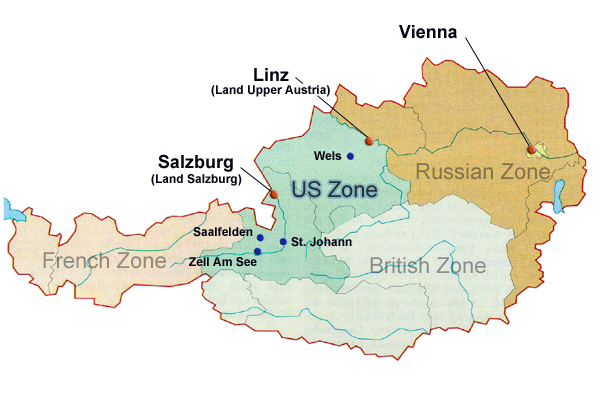Crisis Phase (November 11, 1918-October 1, 1920): Emperor Charles I abdicated on November 11, 1918, and a provisional government was establish on November 12, 1918. Elections for the Constituent Assembly were held on February 16, 1919, and the Social Democratic Party (SDP) won 72 seats. Karl Renner of the SDP formed a government on March 12, 1919. The US provided humanitarian assistance (food assistance) to the government in 1919-1920. Chancellor Renner resigned on June 11, 1920, and Michael Mayr formed a new government on June 12, 1920. The Constituent Assembly adopted a new constitution on October 1, 1920.
Post-Crisis Phase (October 2, 1920-July 14, 1927): Michael Hainisch was elected president on December 9, 1920. Johann Schober formed a new government on June 21, 1921, and Ignaz Seipel of the Christian Socialist Party (CSP) formed a new government on May 31, 1922. Parliamentary elections were held on October 20, 1923, and the CSP won a majority of the seats in the parliament. Chancellor Seipel resigned on November 17, 1924, and Rudolf Ramek formed a government as chancellor. Chancellor Ramek resigned on October 14, 1926, and Ignaz Seipel formed a government as chancellor on October 15, 1926.
Crisis Phase (July 15, 1927-October 26, 1955): Some 70 individuals were killed during demonstrations in Vienna on July 15, 1927. The SDP established the Schutzbund (People’s Guard), and the CSP established the Heimwehr (Home Defense Force) following the violence in 1927. Wilhelm Miklas was elected president on December 5, 1928. Johann Schober formed a government as Chancellor on September 26, 1929, and Karl Vaugoln formed a government as Chancellor on September 30, 1930. Parliamentary elections were held on November 9, 1930, and the SDP won a plurality of 72 seats in the parliament. Otto Ender of the CSP formed a government as Chancellor on December 3, 1930. Chancellor Ender resigned on June 16, 1931, and Karl Buresch of the CSP formed a government as Chancellor on June 21, 1931. President Miklas was re-elected on October 9, 1931.

Chancellor Buresch resigned on May 19, 1932, and Engelbert Dollfuss of the CSP formed a new government as Chancellor on May 20, 1932. Chancellor Dollfuss suspended the parliament on March 4, 1933, and the Austrian Nazis demonstrated in Vienna on March 29, 1933. The government dissolved the Nazi Party on June 19, 1933, and Chancellor Dollfuss survived an attempted assassination on October 3, 1933. Members of the Schutzbund and Heimwehr clashed in Vienna on February 12-15, 1934, resulting in the deaths of some 210 individuals. Chancellor Dollfuss banned the SDP. The National Assembly adopted a new constitution establishing a dictatorship on April 30, 1934. Chancellor Dollfuss was assassinated during an unsuccessful Nazi coup on July 25, 1934, and Kurt Schuschnigg formed a new government as Chancellor on July 30, 1934. Some 2,000 individuals were killed in political violence in 1934. Chancellor Schuschnigg disbanded the Heinwehr on October 10, 1936, and proclaimed himself Fuhrer on October 18, 1936. Chancellor Adolf Hitler of Germany announced the union of Germany and Austria (Anschluss) following the deposition of the government of Chancellor Kurt von Schuschnigg on March 11, 1938. Arthur Seyss-Inquart of the Nazi Party became chancellor on March 12, 1938, and German troops entered Austria on March 12, 1938. Some 99 percent of Austrians voted in favor of the union with Germany in a referendum on April 10, 1938. Soviet troops entered Austria on March 29, 1945, and Soviet troops captured Vienna on April 13, 1945. Some 17,000 Soviet troops were killed fighting in Austria. With the support of the Soviet Union, Karl Renner formed a provisional government as Chancellor on April 27, 1945. The Allied countries (Soviet Union, US, Britain, France) divided Austria into four occupation zones on July 9, 1945. Parliamentary elections were held on November 25, 1945, and the Austrian People’s Party (APP) won 85 out of 165 seats in the National Council. The Socialist Party of Austria (SPA) won 76 seats in the National Council. Leopold Figl of the Austrian People’s Party (APP) formed a government as Chancellor, and Karl Renner of the Socialist Party of Austria (SPA) was elected president on December 20, 1945. Parliamentary elections were held on October 9, 1949, and the Austrian People’s Party (APP) won 77 out of 165 seats in the National Council. The Socialist Party of Austria (SPA) won 67 seats in the National Council. Theordor Korner of the Socialist Party of Austria (SPA) was elected president in the second round with 52 percent of the vote on May 27, 1951. Parliamentary elections were held on February 23, 1953, and the Austrian People’s Party (APP) won 74 out of 165 seats in the National Council. The Socialist Party of Austria (SPA) won 73 out of 165 seats in the National Council. Chancellor Leopold Figl resigned on November 26, 1953. With the Allied powers signing of the Austrian State Treaty on May 15, 1955, the Republic of Austria regained full independence from the Allied countries on July 27, 1955. The last remaining Allied troops withdrew from Austria on October 25, 1955, and Austria declared its “permanent neutrality” in international affairs on October 26, 1955.
[Sources: Clodfelter, 1992, 592; Donelan and Grieve, 1973, 33-38; Langer, 1972, 1013-1016.]
